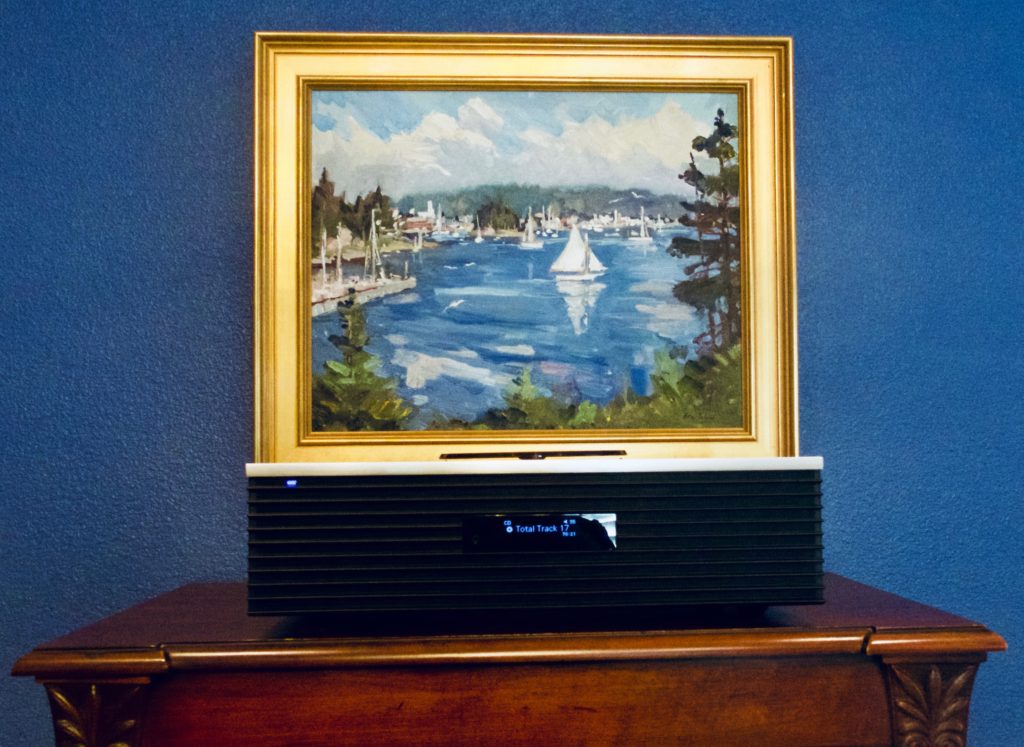
Description or What Is It?
If you read Becky’s post on the four things she wanted to bring home from AXPONA, you know she was really drooling over the OTTAVATM f SC-C70, an all-in-one music solution from Technics that retails for $999. Now, this is saying something because in all the time that we’ve been married, I’ve never known her to listen to anything more than a clock radio in our bedroom, and generally she runs around with earbuds in listening to an audio book. She will occasionally sit down to listen to our high-end system if I’m playing just the right thing. Well Bill Voss, the Technics Audio Division Business Development Manager for North America, realized she really wanted one of these units, and frankly, I’ve been shocked by how much she’s listened to the SC-C70 since it’s been in our house. It’s pictured here on a bachelor’s chest in our master bedroom that’s 30 inches wide.
I have to admit that this unit is a great little design, and as you can see, we’re not the only ones who think so. It is a 2.1-channel, five speaker all-in-one system that offers a wide range of source possibilities. It plays CDs, has an AM/FM radio, it pairs with Bluetooth devices and is DLNA and AirPlay compliant. Connectivity includes an Ethernet LAN port or Wi-Fi, optical digital audio, USB and a 3.5mm stereo mini-jack. It ships with full-size IR remote control, but you can also drive the system using the Technics Music app, which provides even more functionality. You can also control the unit by way of aluminum touch keys that are built into the aluminum top-plate. This is just part of the clean, smooth, modern design with a high-quality operating feel.
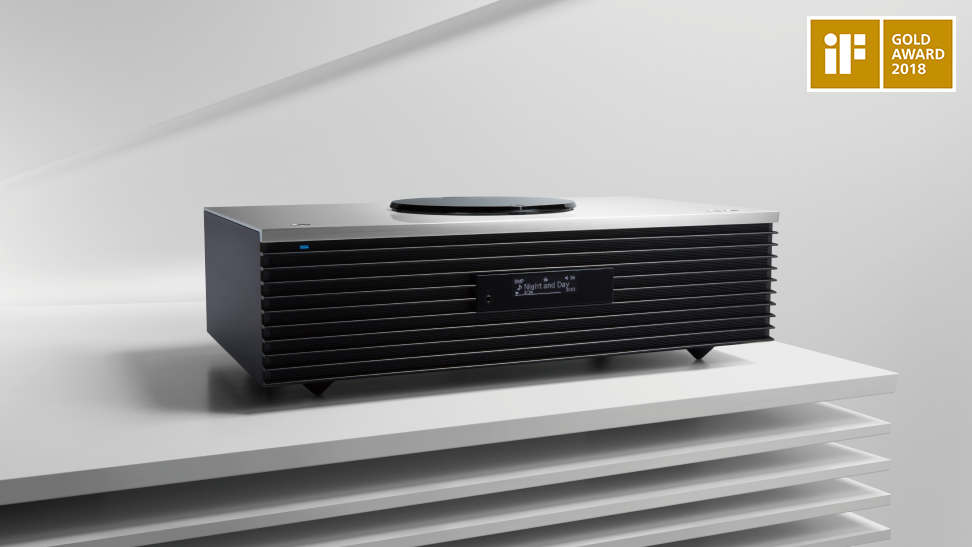
The SC-C70 just looks modern and sleek. I had a longtime audio buddy over, and when he saw it and listened, he said, “I have to have it; it sounds so good and looks even better.” The top-loading CD player (yes, some people still play CDs) has a nice looking round, rotating cover and the disc is illuminated with a subtle light while it spins. The drive itself is isolated by a heavy aluminum plate with vibration absorbing materials. Its clean lines are augmented by a louvered grill that protects two 3/8 inch silk dome tweeters, a pair of 3-1/8 inch cone mid-range woofers, a 4-3/4 inch cone subwoofer on the underside that is routed to dual-bass reflex ports on the rear of the unit. The mid-range and tweeter speaker units are enclosed in separate chambers, while the cabinet is reinforced for extra rigidity.
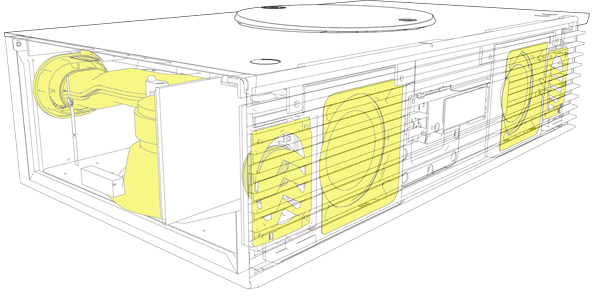
The schematic above from the Technics website shows an internal view of the unit from the front. In front of the tweeters, there’s a pair of acoustic lenses, which are designed to widen the soundstage. The lenses use a “reverse dome-shaped fin” structure. The back sides of the fins are shaped to match the form of the soft-dome diaphragms of the tweeters and are positioned close to the speakers. The SC-C70 also takes advantage of Technic’s own LAPC speaker load adaptive technology. It measures the amp’s frequency amplitude phase characteristics with speakers connected to the unit and performs digital signal processing to achieve the ideal impulse response. Characteristic parameters optimized for the low-frequency and high-frequency speaker load characteristics are already pre-set in the LAPC computation circuit of the unit to realize ideal frequency and phase characteristics over the entire frequency range.
It also uses preset EQ to provide the optimum sound depending on where you place the unit. Technics calls it “Space Tune” with preset equalization for three placements; 1. Free, 2. Near the Wall and 3. Near the Corner. OS device calibration is also available for more precise adjustments for room acoustic conditions using the microphone integrated in an iOS device. It is then possible to tune with true DSP parameters to optimize the acoustic performance.
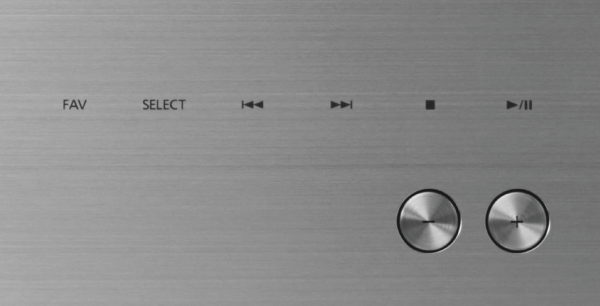
The DNA of current Technics engineering is stamped on the SC-C70 with the use of a trio of JENO (Jitter Elimination and Noise-shaping Optimization) audio-processing engines. These are used for the subwoofer, mid-range and tweeter as well as for channel management and time alignment. The JENO processing engines ensure that all of the audio data contained in the high-resolution sound source is moved faithfully to the speakers without loss.
The SC-C70 is equipped with three units of the same JENO engine as those used in Technic’s high-end models to optimally drive the built-in speakers and achieve a high-quality, integrated hi-fi system that meets Technics’ standards. It also adopts a bi-amp structure to separately drive the woofers) and tweeter/mid-range speaker units and utilizes the high-performance signal processing circuitry (DSP) mounted in the JENO engine to achieve precise channel dividing, adjustment of time alignment between speaker units and correction of frequency characteristics. Technics says, “This unit is an all-out assault on the best small single unit stereo even to the extent that the mid-range and tweeter speaker units are enclosed in separate chambers, while the cabinet is reinforced for extra rigidity.” I’ll just say the build quality of the SC-C70 in incredible.
Using and Listening to the SC-C70
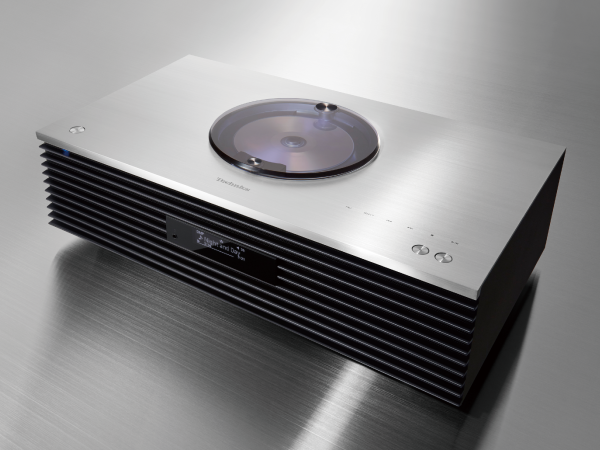
Using the SC-C70 is fairly self-evident even for an old guy like me, but more was revealed after I downloaded the Technics Music app. I found Spotify, Tidal and internet radio on this amp. There is a Favorite function that allows quick access to your top five most listened to radio stations and Spotify playlists. I also found some basic features such as sound settings and tone controls on the app.
Once I set a couple of things to match what I wanted to listen to, the file playback compatibility was huge. The system will play 24-bit/192kHz WAV, FLAC, ALAC and AIFF files, as well as DSD 2.8 MHz and 5.6 MHz. While the unit is compatible with most any source, the SC-C70 is in all practical ways a high-res audio player. Redbook CDs are raised to a higher level by way of a CD high-res re-mastering algorithm that expands their frequency band by oversampling and adds bandwidth extension. The system applies a similar improvement technique to Bluetooth that is said to give it the equivalent range of Redbook CDs. I was shocked at how good Redbook CDs sounded, but the real shock is just how good anything I play sounds on this unit.
The SC-C70 is a little less than 18-inches wide, but it produces a large, wide, open and spacious soundstage. It easily filled our large master bedroom. Although compatible with most any source, I expect for most people it will be used as a high-res audio player or a streamer, but Becky and I have loved it as a CD player. Lately, Becky has been interviewing Blue Coast Records artists, and the acoustic quality of Cookie Marenco’s high-end recordings are simply stunningly good whether we are playing a physical CD or a downloaded file.
Conclusion
The first time Becky saw the SC-C70 she had to have it. She was right that it fits many needs for us. It’s a great system for our master bedroom, we can pick it up and carry it out to the deck and we can put it on the back seat and take it to the Little River Inn (our favorite spot for a weekend getaway) and listen to music and watch the Pacific Ocean. The SC-C70’s full, rich and nicely detailed sound, it’s compact size and it’s sleek looks are a great fit for us. If you have been thinking about getting a nice all-in-one system, this is by far the best one I have heard.
Addendum
When we sent this post to Bill Voss yesterday, we found out that Technics introduced a lower-priced model, the SC-C50, at $799 in Munich, IFA and this week at CEDIA. The primary differences are that the SC-C50 does not have a CD player, but it has Google Chromecast for even more connectivity out of the house, and it has aa larger 32/384 processor. Bill says there is talk about future firmware update ability for stereo pairing and possibly a Roon end point. We’re looking forward to reviewing this new model, so look for a future post on this new model.
